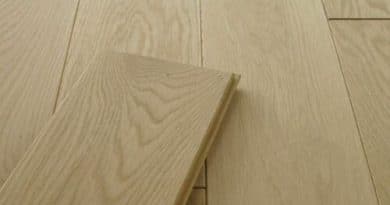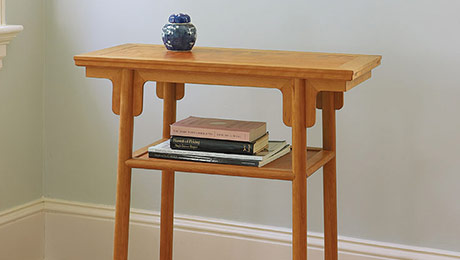A Simple Concept – Pocket Hole Joinery
Pocket Hole Joinery consists of drilling a hole at an angle into one piece of wood, and then joining it to a second piece with a self-tapping screw. The technique of pocket hole joinery began in Egyptian times. “Egyptians clamped two workpieces together and bored a hole at an angle from the outside workpiece into the second workpiece. They then inserted a dowel with glue, and cut it off flush with the outermost surface.” – Wikipedia
A simple concept, pocket hole joinery allows the user to utilize the same technology that is used in high-production cabinet shops.
An advantage of pocket hole joinery over other types of joinery is that you only have to deal with one-half the joint. With biscuits and dowels, you are dealing with both sides of the joint. There is also no time wasted waiting for the glue to dry, just screw and go. The result is a nice flat face which reduces sanding time and a good, solid joint that is ready to be used.
The Kreg System of pocket hole joinery uses a special 2-step drill bit. First, it drills a pilot hole in the end and second, it creates a flat bottom hole. Round bottom holes can cause the wood to split when you screw into them. Therefore, the flat bottom hole, combined with the self-tapping screw creates a mini clamp on the joint making it extremely strong.
From the Kreg website: “An independent lab completed testing a few years back that showed that a pocket hole joint failed at 707 pounds when subjected to a shear load while a mortise and tenon joint failed at 453 pounds (approximately 35% stronger).
Pocket hole joints are tremendously strong for a couple of reasons. 1. The use of a mechanical fastener (screw) is significantly stronger than the material around it (wood), and 2. The amount of direct clamping force placed on the joint by driving the screw combined with today’s glue technology makes for a sensationally strong bond.”
The screws create an enormous amount of clamping power. Be sure that your boards are planned and your cuts are square because the pocket holes will pull joints off to the degree that you’ve cut the angles inaccurately. A packet of these screws comes with the Kreg System and can also be purchased separately in varying quantities.
As Dean Bielanowski states in his online review, “The screws supplied are square drive meaning no hassles with burring or stripping the heads when over-tightening, unlike Philips head and other generic-type screws. They also feature a ‘washer head’ to ensure a solid and even clamping force when driven.
Kreg states on their website that in testing, the strength of the pocket hole joint with metal screws against other traditional forms of joinery (including mortise and tenon joints) was significantly greater. This ensures peace of mind when using pocket holes for joints that will encounter pressure or weight.” Bonus: they cost no more than regular screws.
A valuable accessory to the Kreg System is the Right Angle Clamp. This handy tool helps easily hold together right-angle joints, for instance in chairs and cabinets. The peg of the clamp goes right into the pocket-hole screw, holding your wood pieces together at 90 degrees. This makes it easy to then set the pieces by screwing them into the other pocket holes. Kreg also makes plugs in various species of wood so that you can cover the holes that are made in decorative pieces such as shelving.
Kreg is better.
Kreg’s pocket hole joinery system is better than the others. Why? Because of the flat bottom hole that the Kreg Joiner creates. Porter Cable’s system creates a very nice-looking but round bottom hole. Round bottom holes prevent the washer heads from full seating which can cause the wood to split when you screw it tight. Also, Kreg’s system works on demand. By that, I mean that it doesn’t stay running if you are not using it.
The switch is in the handle that you pull down slightly to clamp, then you pull down more to activate the drill. It consists of one drill, not a separate router and drill bit like the Porter Cable System. And for pretty much the same price you get a very simple, very easy, very nice strong joint.
Eleven Uses for Pocket-hole Joints:
1. Right Angles
2. Beveled edges
3. Aprons
4. Leg rails
5. Picture Frames
6. Window Jambs
7. Trim carpentry
8. Built-ins
9. Decks
10. Cabinet frames
11. Stairways: Use pocket screws and lots of wood glue to keep them from squeaking between the bottom sides of the treads and the riser. Almost all squeaks come from where wood is rubbing against nails.




